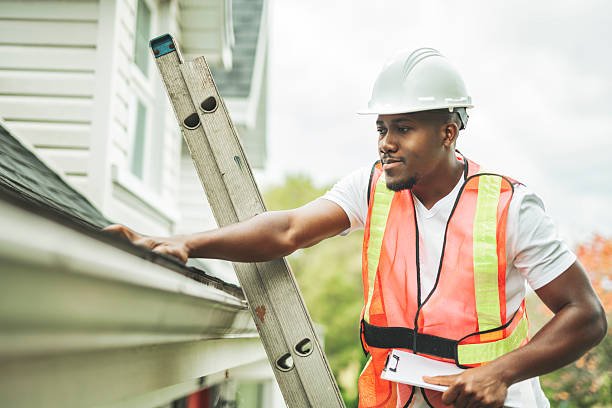Homeownership brings many responsibilities, and one of the most important is maintaining the roof over your head. That’s why a residential roof inspection report should never be overlooked. These detailed documents provide a snapshot of your roof’s condition, highlight issues that may require repair, and help you plan for future maintenance. In this guide, we’ll walk you through what to expect, what to watch for, and how to act on the findings — so you’re fully informed and empowered to take the right next steps.
What is a Residential Roof Inspection Report?
A roof inspection report is a comprehensive document prepared by a qualified roofing professional after evaluating your home’s roof system. The report is designed to inform you of the condition of your roof, identify any current damage or wear, and recommend maintenance or repair actions. For a residential property, the stakes are high: the roof protects your home from the elements, contributes to energy efficiency, and preserves the value of your property.
Key Components of the Report
When you receive your inspection report, you’ll typically find several major sections:
- Materials & Roof Covering: What type of shingles, tiles, metal panels or other materials are used; their age and wear status.
- Roof Features & Penetrations: Chimneys, vents, skylights, gutters/downspouts, flashing – all are inspected for integrity, water intrusion risks and performance.
- Structural Elements: The inspection includes rafters, trusses, sheathing and other support systems. Any sagging, deflection or damage is noted.
- Interior/Attic Inspection: Moisture stains, evidence of leaks, ventilation issues, insulation condition — these interior clues provide important context.
- Drainage Systems: Gutters, downspouts and roof slopes determine how effectively water is shed. Poor drainage can lead to significant damage.
- Overall Condition & Lifespan Estimate: A summary section usually offers a general assessment and an estimate of the remaining useful life of the roof.
How to Interpret the Findings
It’s one thing to receive the report, and quite another to understand what it’s telling you. Here are things to watch:
- Terminology & Grades: Reports often use terms like “excellent,” “fair,” “poor,” or numeric grading. Acquaint yourself with what the inspector meant by each grade.
- Urgent vs. Routine: Prioritization matters. A small missing shingle is different from a sagging deck or active leak. The report should clearly identify what needs immediate, near-term, or long-term attention.
- Photos & Annotations: Good reports include annotated photos showing the exact issue locations — use those to visualize what’s being described.
- Recommendations: Some maintenance tips may be suggested (e.g., clean gutters twice a year), others may call for a professional repair.
- Lifespan Estimate: Pay close attention to the expected remaining lifespan—this can inform whether it makes sense to repair now or plan for replacement soon.
Common Issues Highlighted in Reports
Some of the most frequent findings in a residential roof inspection report include:
- Missing or damaged shingles or tiles
- Worn or deteriorated flashing around roof penetrations
- Poor or aging roof ventilation
- Signs of leakage in the attic or structural deck
- Clogged or ineffective gutters and downspouts
- Structural issues such as sagging rooflines or water-damaged sheathing
Identifying these early can save you from much larger and costlier problems down the line, such as mold growth, rotting framing or interior water damage.
What You Should Do After Receiving the Report
Once you’ve reviewed your inspection report:
- Review priority items: Address any “immediate” concerns first. A roof leak is not worth postponing.
- Get professional quotes: For any recommended repairs, obtain detailed quotes from reputable roofing professionals.
- Schedule routine maintenance: Even if no major issues are found, regular inspections and upkeep (cleaning gutters, removing debris, checking for damage) extend your roof’s life.
- Document everything: Keep a copy of the report, photos, repair receipts and inspection dates — this helps with warranty claims, home resale or future inspections.
- Plan for replacement if needed: If the lifespan estimate is close (e.g., 5-10 years remaining), begin budgeting and researching roofing options now to avoid last-minute costs.
Why Regular Roof Inspections Matter
Skipping regular inspections means you’re relying on things to go wrong before they are discovered. That’s risky. Proactive inspections allow you to catch small problems early, maintain your home’s value, protect against weather damage and avoid emergency repairs. A savvy homeowner uses inspection reports not just as documents, but as tools to strategize roof care.
Conclusion
A thorough residential roof inspection report is an invaluable resource for any homeowner. It equips you with both awareness and actionable steps to protect one of your home’s most critical systems — the roof. By understanding each part of the report, addressing issues promptly and planning future maintenance, you’ll ensure your home remains safe, efficient and durable. At [Your Company Name], we’re committed to helping homeowners interpret their inspection findings and implement smart roof care solutions tailored to their unique situation.
